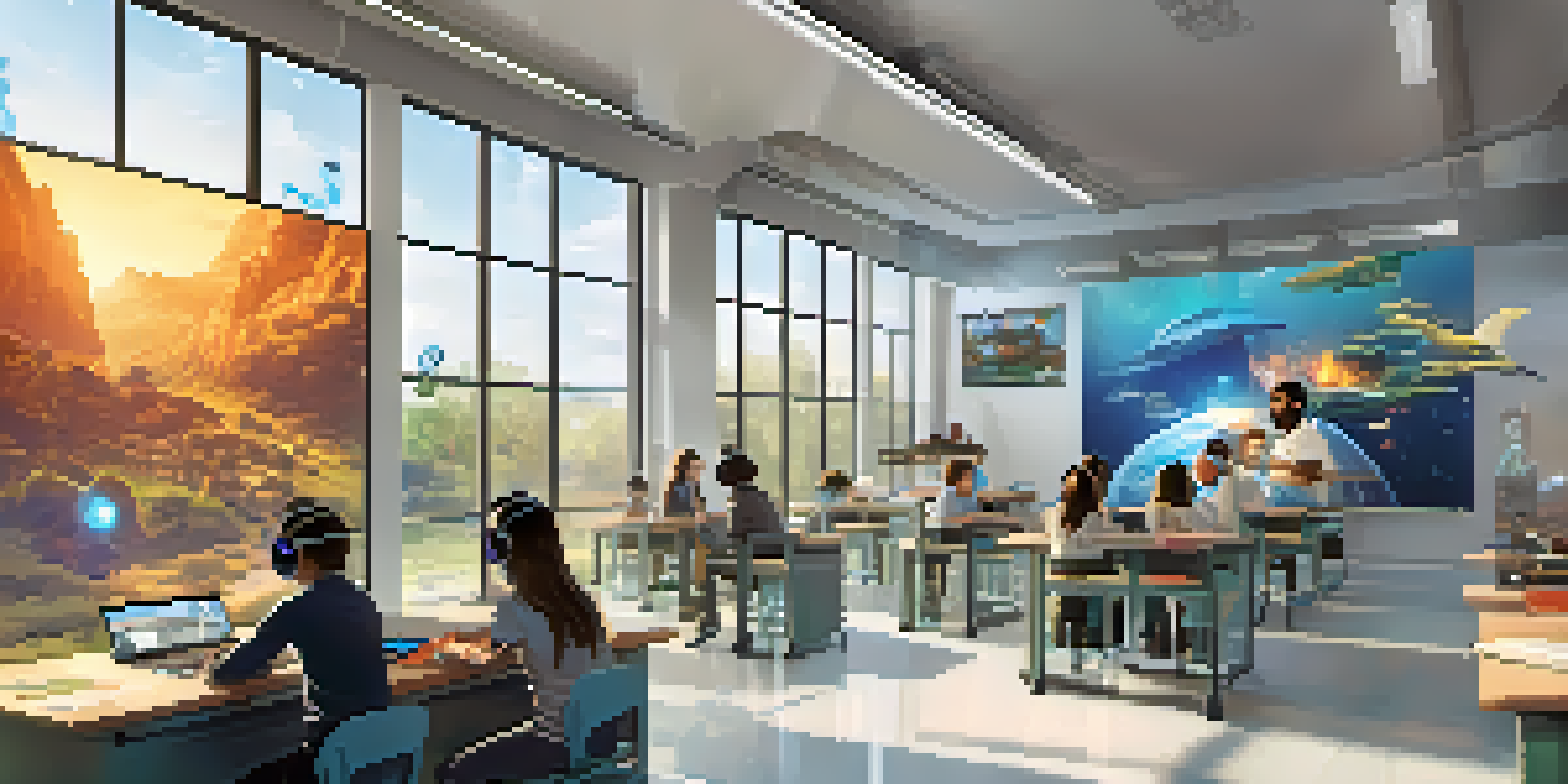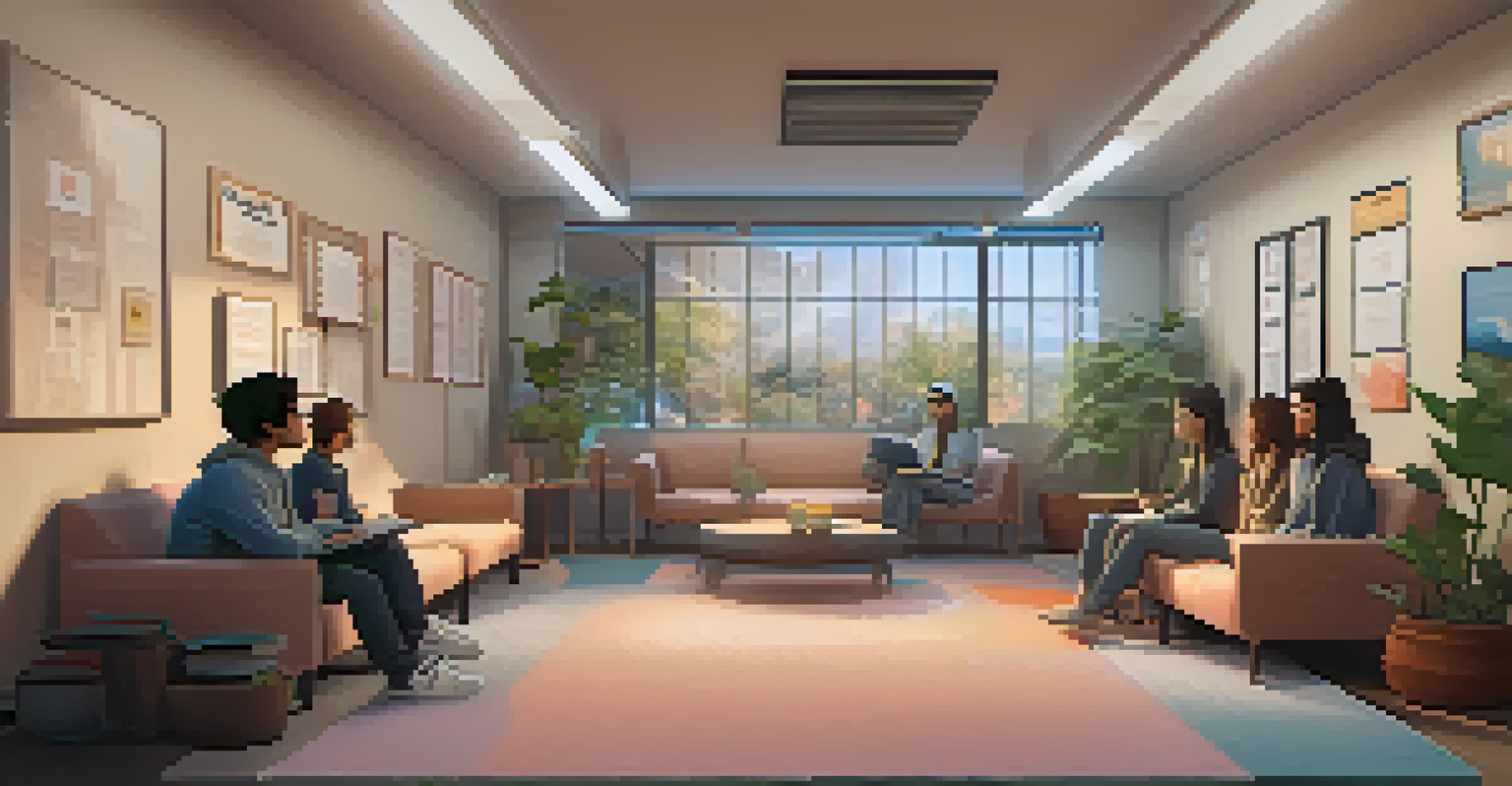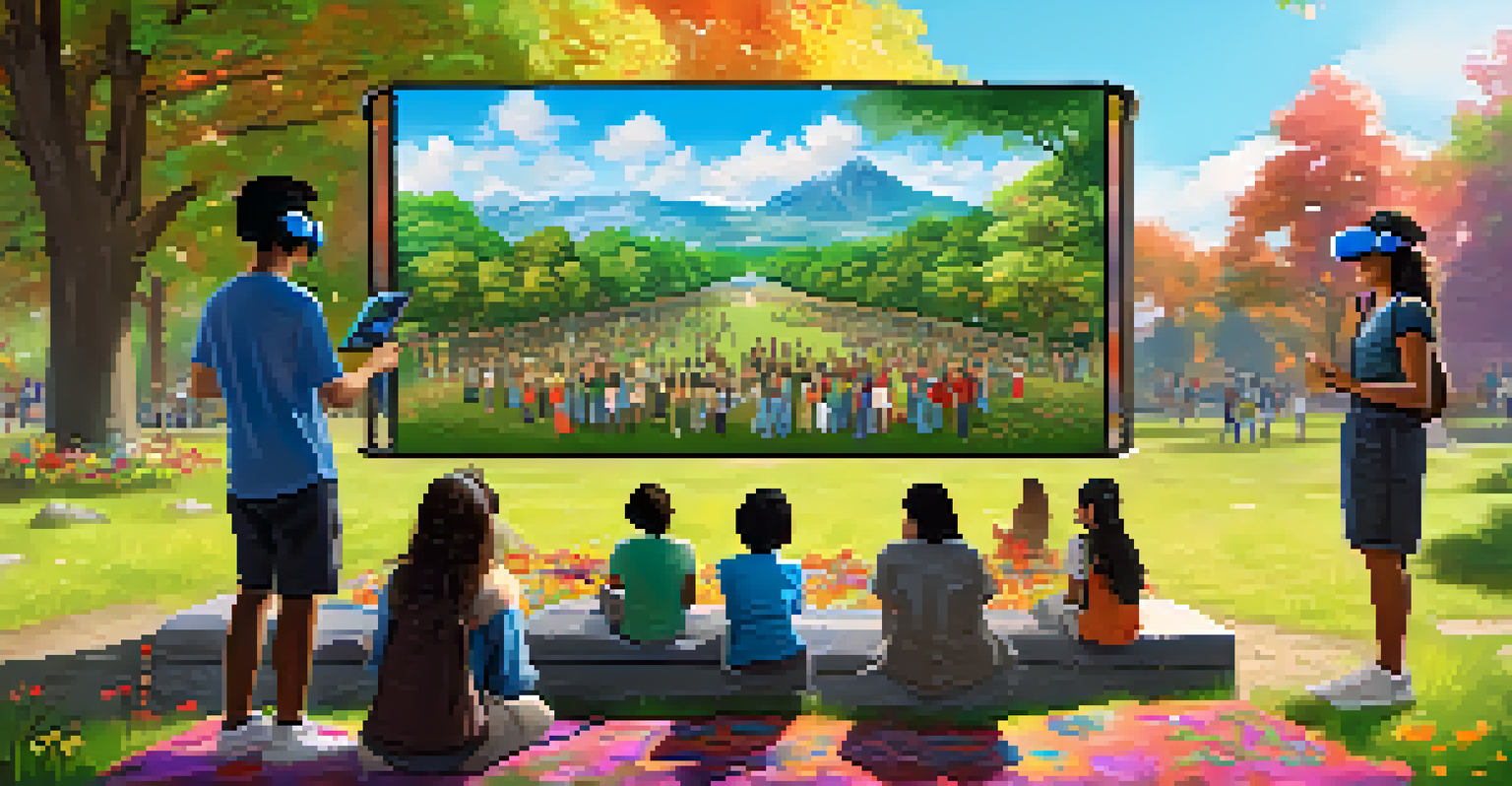Exploring Ethical Dilemmas in Virtual Reality Learning Environments

Understanding Virtual Reality in Education
Virtual reality (VR) has transformed the educational landscape, offering immersive experiences that traditional methods can't match. Imagine stepping into a historical event or exploring the human body from the inside—these engaging scenarios can enhance learning significantly. However, as with any innovation, VR brings its own set of ethical dilemmas that educators and developers must navigate carefully.
Education is not the filling of a pail, but the lighting of a fire.
One major aspect to consider is the accessibility of VR technology. While it offers fantastic opportunities, not all students have equal access to the necessary devices or environments for effective learning. This raises questions about equity in education and whether VR could inadvertently widen the gap between students with different socioeconomic backgrounds.
Furthermore, the effectiveness of VR as a learning tool also depends on its content. Educators must ensure that the material is not only accurate but also sensitive to diverse perspectives. This consideration is crucial in avoiding cultural misrepresentation and ensuring that all students feel represented and included in their learning experiences.
Privacy Concerns in Virtual Reality Learning
Privacy is a significant issue in virtual reality environments, especially when they involve personal data collection. As students engage in VR learning, their interactions and behaviors can be tracked, raising concerns about how this information is used. For example, if a VR platform collects data on a student's emotional responses, it must be handled ethically to protect their privacy.

Additionally, the immersive nature of VR can blur the lines between reality and virtual experiences. Students might forget they are part of a learning simulation, leading to unintentional data sharing or exposure. Educators and developers must prioritize transparency, informing users about data collection and its intended use to maintain trust.
Ethics and Accessibility in VR
Ensuring equitable access to VR technology is crucial to prevent widening the educational gap among students.
To address these issues, strict data protection policies should be established. Educators can foster a safe learning environment by ensuring that students understand their rights regarding personal information and how it is safeguarded within the VR space.
The Role of Consent in VR Learning Experiences
Consent is a cornerstone of ethical practice, and in virtual reality, it becomes even more critical. Before students engage with VR content, they should be fully informed about what they'll experience and how it might affect them. For instance, simulations that involve distressing scenarios must have clear warnings and options for students to opt-out.
Technology is best when it brings people together.
Moreover, younger learners may not fully grasp the implications of consent in a digital space. It's essential for educators to guide discussions around consent, helping students understand their rights and the importance of their choices in VR settings. This education can empower students to advocate for themselves in the future.
Incorporating consent into VR experiences not only respects students' autonomy but also enhances their learning. When students feel safe and in control, they are more likely to engage deeply with the material, leading to a richer educational experience.
Impact of VR on Emotional Well-Being
Virtual reality can evoke strong emotional responses, which is a double-edged sword in education. On one side, it can foster empathy and understanding by placing students in another's shoes, such as experiencing life as a refugee. However, this emotional intensity also poses ethical challenges, especially if the content is potentially triggering.
Educators must consider the emotional impact of VR content and how it might affect different students. Some learners may find certain scenarios overwhelming, leading to anxiety or distress. It's vital to create supportive environments where students can express their feelings and seek help if needed.
Privacy and Consent in VR Learning
Protecting students' privacy and obtaining clear consent are vital components of ethical VR education.
To mitigate these risks, educators should provide resources and support systems for students before and after VR experiences. This preparation can help students process their emotions and engage with the content in a healthy, constructive way.
Cultural Sensitivity in VR Learning Environments
Cultural sensitivity is crucial in any educational setting, but it takes on new dimensions in virtual reality. With VR's ability to transport students across the globe, educators must ensure that the content respects and accurately represents different cultures. Misrepresentation can lead to harmful stereotypes and reinforce biases, which is something we must avoid.
When designing VR experiences, collaboration with cultural experts can help create authentic representations. This involvement ensures that the narratives presented are respectful and accurate, fostering an inclusive learning environment. Students should feel seen and valued in their educational journeys, regardless of their backgrounds.
Moreover, encouraging discussions about cultural differences and similarities can enhance learning. By promoting open dialogue, students are not only educated about diversity but also learn to appreciate the richness of various perspectives, leading to a more empathetic and informed generation.
Balancing Innovation and Ethical Responsibility
As technology advances, the balance between innovation and ethical responsibility in VR education becomes increasingly complex. While the potential of VR is exciting, educators and developers must be mindful of the ethical implications of their choices. This responsibility includes evaluating the impact of VR content on students' learning and emotional well-being.
For instance, the gamification of learning through VR can motivate students, but it can also lead to an overemphasis on competition. Understanding this dynamic is essential to create a balanced educational experience that fosters collaboration rather than rivalry. Educators should continuously assess how VR tools are being utilized in classrooms and adjust accordingly.
Cultural Sensitivity in VR Content
Creating accurate and respectful VR representations of diverse cultures fosters inclusivity and empathy among students.
Regular evaluations and feedback from students can help identify potential ethical concerns. By involving students in the conversation, educators can create more effective and responsible VR learning environments that prioritize the needs and well-being of all learners.
Future Directions for Ethical VR Learning
Looking ahead, the ethical landscape of virtual reality in education will continue to evolve. As technology progresses, new dilemmas will arise, requiring educators to stay informed and adaptable. It’s essential for educational institutions to foster a culture of ethical awareness, preparing students for the realities of a digital world.
Professional development for educators should include training on the ethical use of VR. This training can equip teachers with the skills to navigate complex scenarios and make informed decisions about content and pedagogy. Additionally, involving students in discussions about ethics can empower them as active participants in their learning journey.

Ultimately, the goal is to create VR learning environments that are not only innovative but also ethical and inclusive. By prioritizing ethical considerations, educators can harness the full potential of virtual reality while ensuring it serves as a positive force in education.